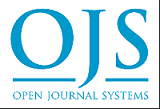A Complementary therapy to reduce pain intensity to treat chronic pain in fracture patients: A systematic review
DOI:
https://doi.org/10.33024/minh.v7i6.476Keywords:
Complementary Intervention Therapy, Fracture, Pain, Randomized Controlled Trial, Visual Analog ScaleAbstract
Background: Patients with fractures often experience significant pain. Complementary therapies are considered helpful in reducing pain levels in those suffering from fractures. The aim of this systematic review is to explore the impact of complementary therapy on pain reduction in fracture patients.
Purpose: To assess the impact of complementary therapy affects fracture patients' levels of pain.
Method: A systematic review approach in line with the Preferred Reporting Items for Systematic Reviews and Meta-Analyses (PRISMA) guidelines. Articles were gathered from online databases including Google Scholar, PubMed, and ScienceDirect, with full-text publications in English from 2012 to 2023. Among these, four were published in China and two in Iran. Quality evaluation was conducted using the Joanna Briggs Institute (JBI) Critical Appraisal Skills Program. The severity of pain in the six studies was measured using the standard Visual Analogue Scale (VAS).
Results: The review included six articles, which demonstrated that complementary therapies can reduce pain in fracture patients. Various complementary intervention techniques were utilized in the studies, including foot intervention, reflexology, auricular acupressure, and elbow intervention therapy. Before and after the interventions, the mean pain intensity scores were 5.72 ± 0.97 in the intervention group and 5.66 ± 0.92 in the control group.
Conclusion: Complementary intervention therapy can significantly reduce pain in patients with fractures. However, additional research is needed to confirm these findings and explore other complementary therapy methods.
References
Adams, R., White, B., & Beckett, C. (2010). The effects of massage therapy on pain management in the acute care setting. International journal of therapeutic massage & bodywork, 3(1), 4.
Ali, A., Rosenberger, L., Weiss, T. R., Milak, C., & Perlman, A. I. (2017). Massage therapy and quality of life in osteoarthritis of the knee: a qualitative study. Pain Medicine, 18(6), 1168-1175.
Barker, T. H., Stone, J. C., Sears, K., Klugar, M., Tufanaru, C., Bee, J. L., & Munn, Z. (2023). The revised JBI critical appraisal tool for the assessment of risk of bias for randomized controlled trials. JBI evidence synthesis, 21(3), 494-506.
Bauer, B. A., Cutshall, S. M., Wentworth, L. J., Engen, D., Messner, P. K., Wood, C. M., & Sundt III, T. M. (2010). Effect of massage therapy on pain, anxiety, and tension after cardiac surgery: a randomized study. Complementary therapies in clinical practice, 16(2), 70-75.
Boitor, M., Gélinas, C., Lalonde, M. R., & Thombs, B. D. (2017). The effect of massage on acute postoperative pain in critically and acutely ill adults post-thoracic surgery: systematic review and meta-analysis of randomized controlled trials. Heart & Lung, 46(5), 339-346.
Braun, V., & Clarke, V. (2006). Using thematic analysis in psychology. Qualitative research in psychology, 3(2), 77-101.
Chang, L. H., Hsu, C. H., Jong, G. P., Ho, S., Tsay, S. L., & Lin, K. C. (2012). Auricular acupressure for managing postoperative pain and knee motion in patients with total knee replacement: a randomized sham control study. Evidence‐Based Complementary and Alternative Medicine, 2012(1), 528452.
DeKeyser, F. G., Cohen, B. B., & Wagner, N. (2001). Knowledge levels and attitudes of staff nurses in Israel towards complementary and alternative medicine. Journal of advanced nursing, 36(1), 41-48.
Eghbali, M., Lellahgani, H., Alimohammadi, N., Daryabeigi, R., & Ghasempour, Z. (2010). Study on effect of massage therapy on pain severity in orthopedic patients. Iranian journal of nursing and midwifery research, 15(1), 32.
Hebble, J. P. (1975). Comprehensive nursing. NLN publications, (16-1538), 107-112.
Imani, F., Nasiri, E., Akbari, H., & Safdari, M. R. (2020). Effect of foot reflexology on postoperative pain in patients undergoing tibia plating surgery: a randomized Clinical Trial. Complementary Medicine Journal, 10(3), 258-269.
Kukimoto, Y., Ooe, N., & Ideguchi, N. (2017). The effects of massage therapy on pain and anxiety after surgery: a systematic review and meta-analysis. Pain Management Nursing, 18(6), 378-390.
Lefaiver, C. A. (2012). Evaluating Research for Evidence–Based Nursing Practice by J. Fawcett and J. Garity (Philadelphia: FA Davis, 2009). Nursing science quarterly, 25(3), 289-290.
Nesami, M. B., Shorofi, S. A., Zargar, N., Sohrabi, M., Baradari, A. G., & Khalilian, A. (2014). The effects of foot reflexology massage on anxiety in patients following coronary artery bypass graft surgery: a randomized controlled trial. Complementary therapies in clinical practice, 20(1), 42-47.
Pasyar, N., Rambod, M., & Kahkhaee, F. R. (2018). The effect of foot massage on pain intensity and anxiety in patients having undergone a tibial shaft fracture surgery: a randomized clinical trial. Journal of orthopaedic trauma, 32(12), e482-e486.
Pati, D., & Lorusso, L. N. (2018). How to write a systematic review of the literature. HERD: Health Environments Research & Design Journal, 11(1), 15-30.
Qiu, L., Wang, Y., & Wang, X. (2022). [Retracted] Application Value of Elbow Pressing Method Combined with Zhongtong Ling Application in Children with Swelling and Pain after Operation of Supracondylar Fracture of the Humerus. Contrast media & molecular imaging, 2022(1), 8594443.
Rambod, M., Sharif, F., Mohammadi, N. P., Pasyar, N., & Rafii, F. (2014). Evaluation of the effect of Benson's relaxation technique on pain and quality of life of haemodialysis patients: a randomized controlled trial. International journal of nursing studies, 51(7), 964-973.
Simon, L. S. (2012). Relieving Pain In America: A Blueprint For Transforming Prevention, Care, Education, And Research. Journal of Pain & Palliative Care Pharmacotherapy, 26(2), 197–198.
Small, C., & Laycock, H. J. J. O. B. S. (2020). Acute postoperative pain management. Journal of British Surgery, 107(2), e70-e80.
Thanakiatpinyo, T., Suwannatrai, S., Suwannatrai, U., Khumkaew, P., Wiwattamongkol, D., Vannabhum, M., & Kuptniratsaikul, V. (2014). The efficacy of traditional Thai massage in decreasing spasticity in elderly stroke patients. Clinical interventions in aging, 1311-1319.
Vickers, A., & Zollman, C. (1999). Massage therapies. BMJ, 319(7219), 1254-1257.
Wang, H. Y., Lu, T. C., Chou, C. Y., Liang, J. K., & Chan, T. W. (2004, March). Implementation and evaluation of three learning activity levels in wireless learning environment. In The 2nd IEEE International Workshop on Wireless and Mobile Technologies in Education, 2004. Proceedings. (pp. 59-66). IEEE.
Yu, G., Ma, S., Zhang, X., Liu, S., Zhang, L., & Xu, L. (2021). Analysis of effect of high-quality nursing on pain of emergency orthopedic trauma patients and related factors affecting postoperative pain. American Journal of Translational Research, 13(4), 3658.
Zhu, Y., Yang, B., & Wang, Y. (2023). Effects of comfort nursing combined with rehabilitation training on joint function, pain level and quality of life in patients with lower extremity fractures. Archives of Clinical Psychiatry, 50(6).
Downloads
Published
How to Cite
Issue
Section
License
Copyright (c) 2024 Malahayati International Journal of Nursing and Health Science

This work is licensed under a Creative Commons Attribution-ShareAlike 4.0 International License.









